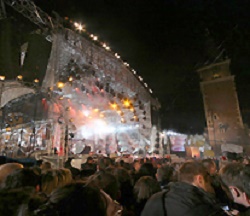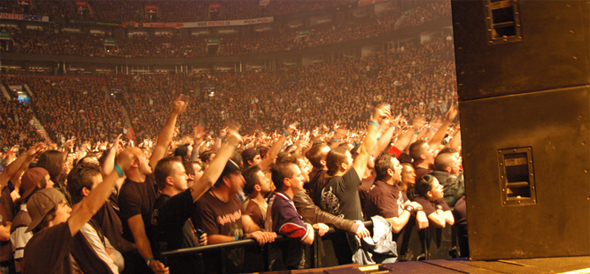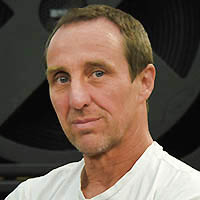Those of us who indulge in live sound spend countless hours paying attention to every detail in the audio signal chain – comparing, pondering opinionating and deciding every issue that crosses our path.
Does this mixing console sound better? Do I need to spend an extra $2,000 on a vocal compressor? Can you please move the guitar mic two millimeters to the left? Does phantom power really ruin ribbon mics?
One question persists, however: to what end is all this toiling done?
Blasting Perfection Into Chaos
Does it seem that a flown PA system sounds better than the exact same system ground stacked? How come it always sounds brighter when you stand on the mix riser?
Have you ever noticed that the same venue sounds different one night to the next, even when you do not change a thing? All of these things can be partially or completely explained by understanding the thermodynamics of a rock show.
Further, armed with this knowledge, you can make setup and mixing decisions that result in improvements that the people attending the show will actually notice – as opposed to things like fiddling with an expensive tube comp that the audience could not care less about.
This is not a scientific article peppered with equations; there are plenty of those out there already. My goal here is to present these complex factors as understandable concepts that will assist you as an engineer/system tech to optimize the sound in a venue.
In my mind, to keep things clear, I divide the relevant venue thermodynamics into three categories:
● Sonic absorption related issues
● Sonic direction related issues
● Sonic velocity related issues
Humidity & Absorption
Does this sound familiar? The show starts, the sound is harsh as you chase the high frequency EQ around, and finally, 30 minutes into the set, everything starts to fall into place and sounds good.
Then you realize that you really have not changed much. There actually is a very real reason that this occurs, and it’s not just that the band is finding their groove.
In low humidity environments, relatively minor variations in humidity levels will have a much more pronounced effect on the sound than the same percentage of variation at high humidity levels.
In other words, in a venue with very low humidity (0- to 5-percent), the sound will tend to be brighter. Then as the humans increase the humidity, the sound will get duller up to a point.
Yet beyond 30 percent of humidity or so, the high humidity levels can cause it to be brighter and stabilize. As such, the frequency dependant attenuation caused by humidity is most drastic between 5 and 30 percent humidity levels and primarily affects frequencies of 2 kHz and higher.
















